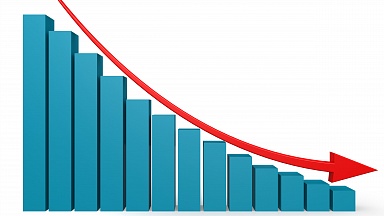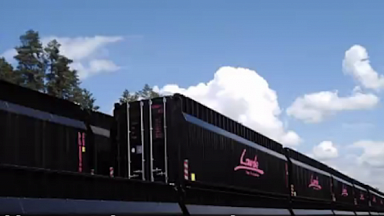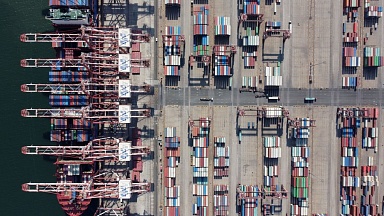In 2024, industrial production in Russia grew by 4.6% compared to 2023. However, there was a difference in the structure of growth, as extractive industries showed a decrease of 0.9%, while manufacturing rose by 8.5%. Amid these changes, the total volume of goods shipped through the Russian Railways network amounted to 1.1814 billion tonnes, which is 4.1% or 50.8 million tonnes less than the previous year. The downward trend in Russia’s freight transport has persisted for the past 15 months, starting from the fourth quarter of 2023.
Each of the main cargo groups showed a negative trend. Coal shipments decreased by 5.4%, which is equivalent to 18.9 million tonnes. Iron and manganese ore shipments decreased by 1.2%, or 1.3 million tonnes. The volume of ferrous metals shrank by 9.3%, or 6.3 million tonnes. Construction materials also showed a significant decrease, down 14.5% or 18.8 million tonnes. The volume of transported cement dropped by 4.7%, or 1.1 million tonnes. Transportation of ferrous scrap shrank by 18.5%, which in physical terms amounted to 2.5 million tonnes. Grain shipments also showed a decrease of 4.6%, down by 1.5 million tonnes.
At the same time, chemical and mineral fertilizers were an exception to the overall negative trend, with the volume of these goods shipped by rail growing by 6.2%, or 4 million tonnes last year. Container transportation also posted an increase of 1.6%, which is equivalent to 0.8 million tonnes.
Exports are highly important for analysing last year’s rail freight transport performance. Overall, export traffic decreased by 4.1%, or 17.5 million tonnes. The coal industry experienced a significant decline in export shipments, down 9.3% or 18.2 million tonnes. Transportation of oil and petroleum products decreased by 2.4%, or 2 million tonnes in this segment. Ferrous metals also saw a decrease of 9.3%, or 2.1 million tonnes. Timber shipments plummeted by 10.4%. Despite this, the share of exports in the total amount of goods handled by rail remained relatively stable (35.1% in 2024 against 35.0% in 2023).
In 2024, freight transport by the Russian Railways network amounted to 2.5934 trillion tonne-kilometres, which is 4.5% less than in 2023. This decrease was a consequence of a general decline in freight traffic due to shrinking output in certain industries and changes in logistics.
The average length of haul in 2024 decreased by 0.4% to 2,195 km. The structure of shipments remained almost unchanged from the previous year. Domestic shipments accounted for 59.7% of the total, which corresponds to the 2023 level, but in absolute terms, domestic freight traffic shrank by 4.3%. The share of exports in total freight transport remained stable at 31.6% as well, but in absolute terms, export transportation decreased by 4.0%. Import traffic also showed a decrease, from 5.6% in 2023 to 5.4% in 2024, which is equivalent to a 7.5% decrease in absolute terms. At the same time, the share of transit shipments increased from 3.1% to 3.3%, by 0.2 percentage points, which may indicate a growing international demand for Russian railways as a transit corridor.


